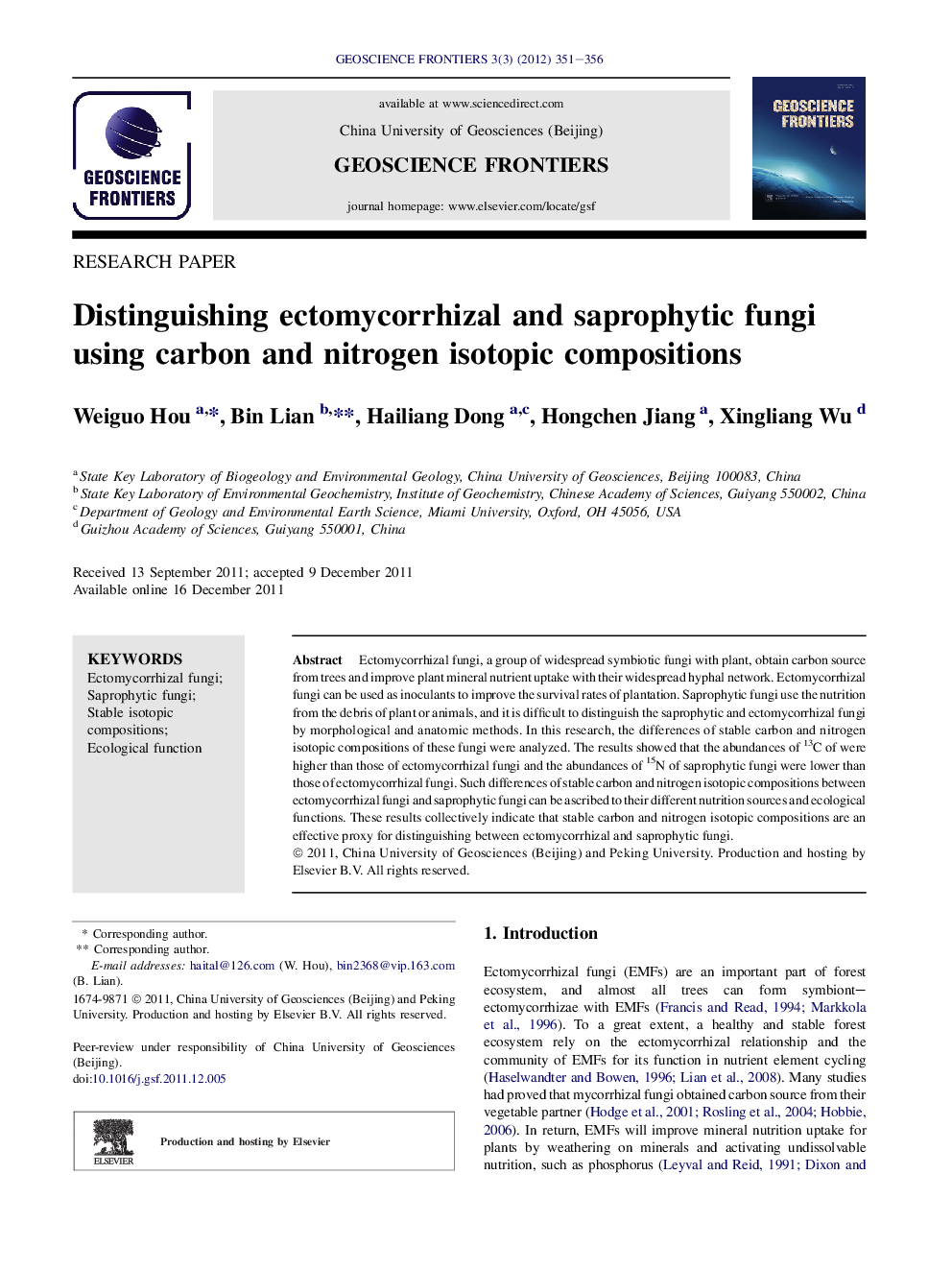| کد مقاله | کد نشریه | سال انتشار | مقاله انگلیسی | نسخه تمام متن |
|---|---|---|---|---|
| 4681827 | 1348876 | 2012 | 6 صفحه PDF | دانلود رایگان |

Ectomycorrhizal fungi, a group of widespread symbiotic fungi with plant, obtain carbon source from trees and improve plant mineral nutrient uptake with their widespread hyphal network. Ectomycorrhizal fungi can be used as inoculants to improve the survival rates of plantation. Saprophytic fungi use the nutrition from the debris of plant or animals, and it is difficult to distinguish the saprophytic and ectomycorrhizal fungi by morphological and anatomic methods. In this research, the differences of stable carbon and nitrogen isotopic compositions of these fungi were analyzed. The results showed that the abundances of 13C of were higher than those of ectomycorrhizal fungi and the abundances of 15N of saprophytic fungi were lower than those of ectomycorrhizal fungi. Such differences of stable carbon and nitrogen isotopic compositions between ectomycorrhizal fungi and saprophytic fungi can be ascribed to their different nutrition sources and ecological functions. These results collectively indicate that stable carbon and nitrogen isotopic compositions are an effective proxy for distinguishing between ectomycorrhizal and saprophytic fungi.
Figure optionsDownload as PowerPoint slideHighlights
► Ectomycorrhizal and saprophytic macro fungi are hard to distinguish with anatomical and genetic methods.
► Isotopic compositions of fungal fruit bodies can be used to distinguish ectomycorrhizal and saprophytic fungi.
► The trophic manners give rise to the differences in isotopic compositions of the two categories of fungi.
Journal: Geoscience Frontiers - Volume 3, Issue 3, May 2012, Pages 351–356